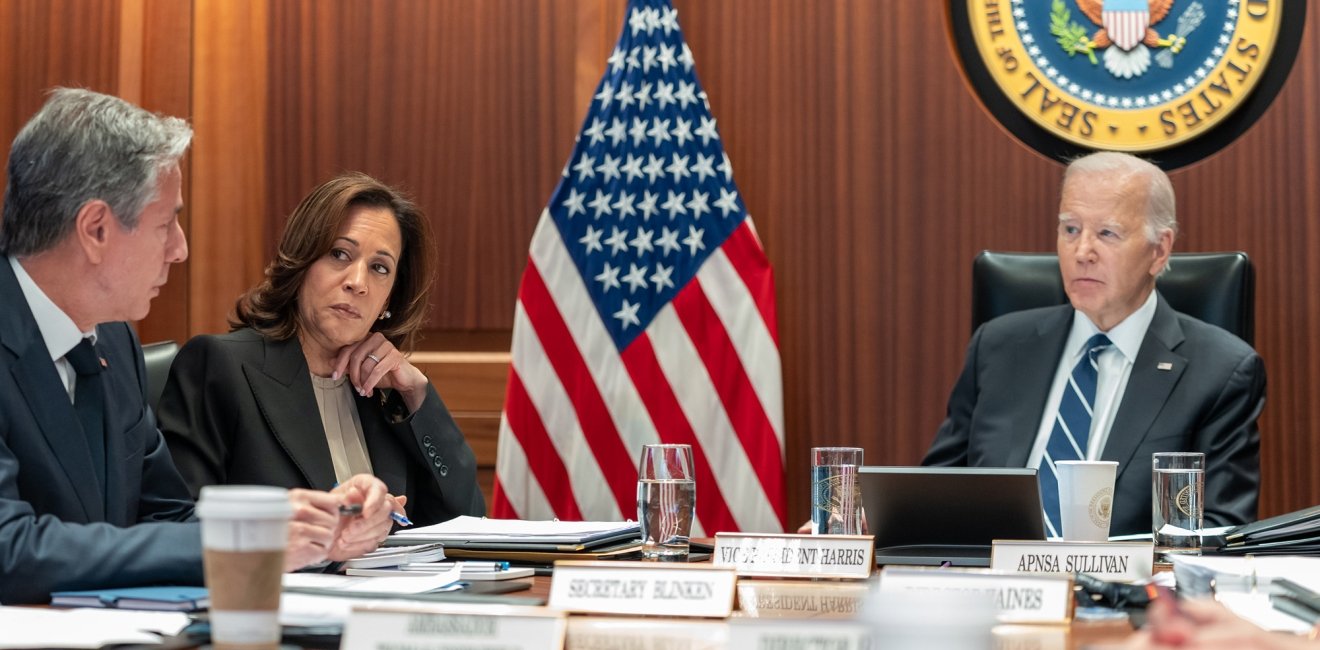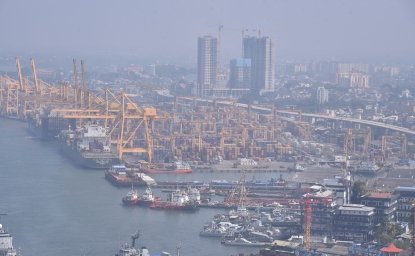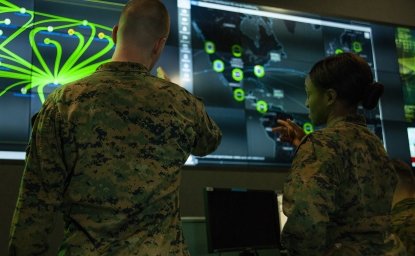
A blog of the Indo-Pacific Program
These are tough times for those guiding the US ship of state in turbulent international waters — and it is not going to get any easier. Currently, policymakers in the White House, the State Department and the Pentagon have to deal with two wars, in Europe and the Middle East, and an intense armed rivalry in Asia that is more intrinsically dangerous than either.
The Russian invasion of Ukraine has ignited a hot war in Europe — something nearly everyone thought impossible three quarters of a century after the end of World War II. The Kremlin’s attempt to decapitate the Kyiv government and occupy all of Ukraine has failed. However, the Ukrainian counteroffensive intended to drive the Russian forces out of the nearly 20 percent of Ukraine’s territory that they still occupy has stalled. The US and its NATO allies have supplied Ukraine with tens of billions of dollars worth of military equipment and munitions. The courage, sacrifice and resourcefulness of Ukraine’s military, population and leadership have been a wonder. Ukraine has held its own in a war with a much larger neighbor — but has yet to prevail. In the meantime, the carnage is gut-wrenching. As President Zelensky has lamented, “We are losing the best of us.”
None of this alters the fact that America has a very real stake in the outcome of this war.
None of this alters the fact that America has a very real stake in the outcome of this war. The Kremlin under Vladimir Putin is a fascist regime bent on territorial conquest — no different in kind than Hitler’s Third Reich. Putin seeks to destroy the post-World War II order built by the US and its European partners. If Putin has his way, civilized relations in Europe will give way to a returning jungle.
In the Middle East, the challenges and dangers for the US are quite different. With its initial, full-throated support for Israel’s retaliation against Hamas, the US, like it or not, has become a full partner in a humanitarian catastrophe in Gaza. As a consequence, the foreign policy costs to the US among Islamic populations in the Middle East and Asia are high and rising fast.
In the Ukraine conflict, nothing is assured, but there is a real chance that the US may emerge in a strengthened position. A Ukrainian victory or relative success would solidify US leadership in Europe, consolidate a European economic and security order embodied in the EU and NATO — and greatly weaken and marginalize Russia over the near and long-term. In the Gaza war, there are no upsides for the US; it’s all negative. No one knows exactly how or when the fighting will end. But, however it ends, the over two million Palestinians living there will emerge crippled, traumatized, embittered and destitute. Who will rebuild a moonscape of buildings reduced to rubble? Who will pay for it? How will Israel “administer” Gaza when the entire population seethes with hatred for the “occupiers?” Who else could administer it? Probably no one. [The Palestinian Authority on the West Bank is an empty shell without credibility or capability.] Will anyone else even be willing to try? Probably not. If you watch the body language of Secretary of State Blinken, who has been shuttling from one Middle Eastern capital to another looking for help, you see a man exhausted and defeated.
Perhaps paradoxically, China, right now, also looks more hopeful.
In the Pacific, the challenges, at least for now, look very different. For America’s true national security and economic interests, Gaza means little, Ukraine means a lot, and China eclipses both. Perhaps paradoxically, China, right now, also looks more hopeful. This is a change. For most of the last fifteen months, US-China relations have been in an acrimonious downward spiral triggered by House Speaker Pelosi’s high-profile visit to Taiwan (August 2022), followed by a Chinese spy balloon that transited the US before being shot down. It has been clear for several months that the White House feared that antagonistic attitudes were getting out of hand and could become quite dangerous.
Consequently, a number of senior US officials have visited Beijing with variations on the same message: America and China will be rivals and competitors, but the two countries can also work together and, most important, avoid outright conflict. A US-China war over Taiwan or the South China Sea would dwarf what we have seen in Ukraine and Gaza. For one thing, US forces would be directly engaged, whereas now they are not. In China, the US would face a military peer — or something very close to it. The Chinese navy, lest we forget, is far larger than America’s and for many years Beijing has been researching, building and deploying missile systems designed to destroy American carrier battle groups. The most immediate worry is that US naval ships and military aircraft patrolling the South China Sea are encountering increasingly aggressive harassment from their Chinese counterparts. When a Chinese fighter aircraft comes within ten feet of a US nuclear-armed bomber, the risks are obvious.
A key question is whether the Chinese leadership shares these concerns. In the last three weeks or so, there are signs that Beijing, too, wants to put relations on a more stable footing. President Xi agreed to meet with President Biden in San Francisco. This is hopeful, and there are reasons to believe it is real. The great stabilizer in US-China relations is huge economic interdependence — trade and investment — between the two countries. China has enjoyed nearly four decades of unprecedented economic growth. The communist party dictatorship in China needs broad popular acquiescence, if not support. The party has claimed that support in large part by pointing to the record of economic progress, but now growth has slowed to a crawl. Public debt is massive; youth unemployment is pervasive; the popular mood is sour. Party leaders, including Mr. Xi, have lost a bit of their usual swagger.
Maybe history has provided a moment when Beijing and Washington can decide they really need to find some areas where they can work together.
The views expressed are the author's alone, and do not represent the views of the U.S. Government or the Wilson Center. Copyright 2023, Asia Program. All rights reserved.
Follow the Asia Program on Twitter @AsiaProgram. or join us on Facebook.
Author

Adjunct Professor, Johns Hopkins University; Former Professor of National Security Policy, National War College and Deputy Staff Director, Senate Select Committee on Intelligence

Indo-Pacific Program
The Indo-Pacific Program promotes policy debate and intellectual discussions on US interests in the Asia-Pacific as well as political, economic, security, and social issues relating to the world’s most populous and economically dynamic region. Read more





